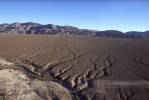Ely offers a cooler destination with plenty to do


With plenty of summer outdoor activities available and temperatures at comfort level over the next couple of months, the town of Ely should be a priority summer destination for Southern Nevadans with an itchy hiking foot.
Though Southern Nevada thermometers reach three digits almost daily during the same months, Ely, more than 4,000 feet higher in elevation and a little farther north, enjoys average daily highs around 80 degrees in June and the upper 80s in July and August. Those are ideal temperatures for sightseeing and hiking.
If you have two or three days to spend in the region, Ely has enough restaurants and comfortable rooms to serve as a home base while making side trips to see Great Basin National Park or the Ward Charcoal Ovens or to enjoy the waters of Cave Lake State Park.
If you had time to enjoy only one of this region’s experiences, it should be the Nevada Northern Railway, headquartered in East Ely. A National Historic Landmark, the railway is one of America’s best preserved shortlines. Visitors can take a ride on two historic routes, the McGill Junction Route and the Keystone Route. The excursion train ride takes about 1½ hours and includes a walking tour of the railway complex.
The Ward Charcoal Ovens State Historical Park boasts six 30-foot-high, beehive-shaped ovens built in the late 1800s. These well-preserved historic structures produced charcoal for smelting ore and operated from 1876 through 1879 during the silver boom in the area. Picnicking and camping are encouraged at the park, and there are plenty of hiking opportunities. The park is about 18 miles south of Ely.
Cave Lake State Park, a 32-acre reservoir, is about 14 miles southeast of Ely. The lake offers great fishing opportunities, including the record for brown trout, and boating, swimming, hiking, camping and picnicking. On June 22, the lake is the place to be for the annual event called Cocktails and Cannons, which features the Great Bathtub Races. Navigating in an iron tub must be a blast, but watching the races from shore is almost as much fun. The program also includes kayak and canoe races. There are concessions open during the day and a barbecue and fireworks at night.
Great Basin National Park is little more than an hour away from Ely and well worth a visit while you are in the area. If you are short on time, driving the 12-mile Wheeler Peak Scenic Drive is a great experience. The road climbs up more than 4,000 feet in elevation to 10,000 feet. From there, many visitors head to one of the hiking trails where you can expect to see plenty of wildlife and wildflowers through summer. There are trails that take you to a bristlecone pine forest or high alpine lakes. For more adventure, and with plenty of preparation, you could hike up to Wheeler Peak, at 13,063 feet.
Besides outdoor activities, the park is home to Lehman Caves. There, you can take a guided tour to see formations including stalactites, stalagmites, helictites and more than 300 rare shield formations. There are two different tours available: the 60-minute Lodge Room Tour and the 90-minute Grand Palace Tour. Reservations are recommended in the summer months. There are five developed campgrounds in the park. For more information, visit nps.gov/grba.
For more information on Ely, its outdoor activities, lodging and other services, contact the White Pine County Tourism and Recreation Board, Bristlecone Convention Center. For more information, call 800-496-9350 or visit elynevada.net.
Deborah Wall is the author of “Great Hikes, A Cerca Country Guide” and “Base Camp Las Vegas: Hiking the Southwestern States,” published by Stephens Press. She can be reached at deborabus@aol.com.


















